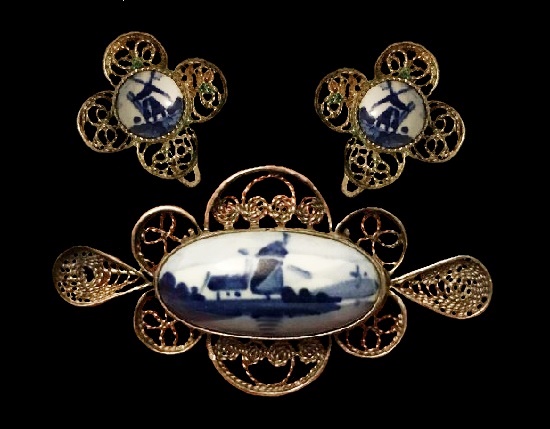Delft vintage porcelain jewelry
Delft vintage porcelain jewelry
Dutch porcelain handpainted in blue and white is known all over the world, and its production originated in the 17th century in the city of Delft. Traditionally, craftsmen decorated items with floral ornaments, landscapes, biblical stories, and folklore scenes. A special feature of Delft porcelain is its repeated glazing with transparent lead glaze and final firing at low temperatures. Such production makes products similar to faience.
A symbol of the city and a popular souvenir, blue and white Delft porcelain is embodied in jewelry. Framed with filigree silver patterns, pendants, brooches, earrings and bracelets have similar themes, and mostly windmills. However, the workshops that create these jewelry pieces are located not only in Delft, but also in other towns. Among them in particular, Tholen (Plateelbakkerij Delft), Amsterdam (Plateelbakkerij Delft), Milsbeek (Wijnhoven’s En Franken Aardewerkfabriken), Gouderak (Montagne Aardewerkfabriek), and many others. The list of companies and workshops making Delft porcelain now or in the past is very long. Also, many companies are a family owned businesses, employing several generations of craftsmen.
Noteworthy, the production of jewelry began at the end of the 19th century, and the real boom in jewelry production began after the Second World War. Tourists visiting the Netherlands gladly bought blue and white jewelry as a memory of the trip. Yet, the most popular Delft porcelain items are decorative plates and wall panels. The design of these products is based on famous paintings by Dutch Golden Age painters.





















